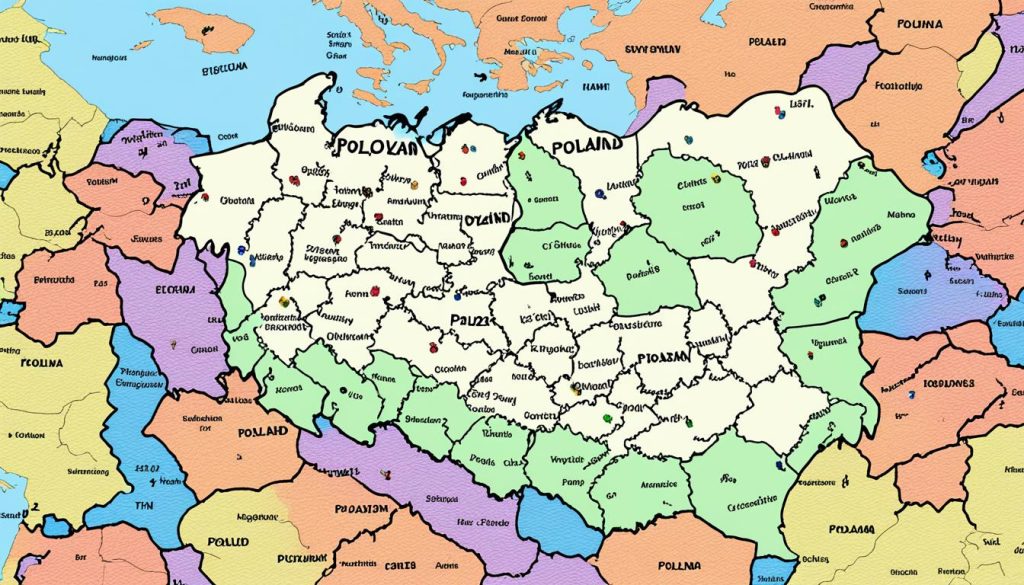For professionals and businesses interacting across international borders, understanding Poland’s local time is essential. This knowledge helps ensure smooth communication. With global markets more connected than ever, knowing the Warsaw time zone aids in scheduling.
It streamlines operations and reduces confusion or delays.
The accuracy of Poland’s live time is crucial, especially with daylight saving changes. These adjustments can impact international coordination deeply. Keeping up with live time updates in Poland is key for successful global interactions.
This applies to conference calls, online meetings, or timely deliverables. Staying informed helps establish a reliable foundation for planning and synchronisation.
Key Takeaways
- Staying informed about Poland’s local time is essential for effective international communication.
- Understanding the Warsaw time zone helps in accurate scheduling and planning across different countries.
- Real-time updates on the live time in Poland aid in synchronising international business operations.
- Adjusting to daylight saving changes in Poland is important for maintaining seamless global interactions.
- Accessing current Poland time updates can prevent miscommunication and missed opportunities.
- Use reliable sources to check the live time in Poland to support international logistics and personal coordination.
Understanding the Time Zone in Poland
Poland uses Central European Time, or Poland CET. This makes it key for local and global schedules. Knowing Poland CET helps with worldwide timing. Here, we explore Central European Time, daylight saving in Poland, and comparing times with other countries.
The Basics of Central European Time (CET)
The Central European Time Zone is the clock time for central Europe, including Poland. It’s used across many European countries. This aligns Poland’s time with major regions, aiding travel and cross-border work. Grasping CET is vital for dealings with Poland’s business, culture, or people.
Daylight Saving Adjustments in Poland
Poland changes its clocks for daylight saving twice a year. Clocks go forward an hour in spring and back in autumn. These shifts affect daily life and international communication. Knowing these changes helps keep schedules accurate.
Comparing Time Zones: Poland vs Other Countries
Making international time comparisons is crucial for global work. It’s important to compare Poland CET with other time zones like EST, PST, or GST. This helps businesses manage meetings and deadlines worldwide.

Understanding time zone differences is the first step in coordinating global activities. With Poland at the heart of Central European Time Zone, it plays a vital role in worldwide timing.
What Time is it in Poland
Finding the current Poland time is essential. Whether it’s for a video conference, a trip to Warsaw, or just out of curiosity, knowing the time now in Warsaw is key. This section is about understanding time in Poland accurately, which is vital for international talks.
In today’s world, knowing local times globally is crucial. Poland uses Central European Time. This matters if you’re scheduling calls or meetings. The table below shows Poland’s time compared to other places.
| City | Current Time | Time Difference with Warsaw |
|---|---|---|
| Warsaw | 12:00 PM | — |
| London | 11:00 AM | -1 hour |
| New York | 6:00 AM | -6 hours |
| Beijing | 7:00 PM | +7 hours |
| Sydney | 10:00 PM | +10 hours |
Understanding current Poland time helps with global connections. Remember, the time now in Warsaw can change with daylight saving. Staying updated is key for reliability and punctuality.
Conclusion
Understanding Poland’s time zone is crucial for global teamwork. Professionals and organizations must match their times with Poland accurately. This guarantees smooth talks with Polish partners.
Knowing the time differences between countries helps with global planning. It stops delays in meetings and deals. By understanding Poland’s Central European Time (CET), we can better schedule our activities.
Having up-to-date time info for Poland is key for international relationships. This knowledge lets you manage your time well. Knowing the time in Poland is essential for success in global dealings.
FAQ
What is the current local time in Poland?
You can find Poland’s local time using live updates. These updates show seasonal and daylight saving changes. Websites and apps with live Poland clocks offer this info.
How does the Warsaw time zone relate to Central European Time?
Warsaw follows Central European Time (CET). This is the standard time for many central and some western European countries. During daylight savings, Warsaw switches to Central European Summer Time (CEST).
Are there daylight saving time adjustments in Poland?
Poland adjusts its clocks for daylight saving. This means clocks go forward an hour in late March. They go back in late October to make better use of daylight.
When checking the time in Poland, what impact do daylight saving changes have?
In Poland, daylight saving changes can alter schedules for international talks. They cause an hour shift, impacting activity timing across time zones.
How does Poland’s CET compare with other international time zones?
Poland’s time is 1 hour ahead of Coordinated Universal Time (UTC+1). It’s 2 hours ahead during daylight saving (UTC+2). This is important when setting up global meetings or calls.
Can you provide the time now in Warsaw?
To get Warsaw’s exact current time, check a live Poland clock. Or use a real-time digital widget that adjusts for daylight savings.
Why is it important to know the live time in Poland?
Knowing Poland’s live time is key for worldwide talks or dealings with Polish companies or people. It helps honour work hours and cultural norms for scheduling.
What resources can help with international time planning when coordinating with Poland?
For international planning with Poland, use world clock websites or time conversion tools. They offer live Poland time updates, factoring in timezone and daylight saving practices.



